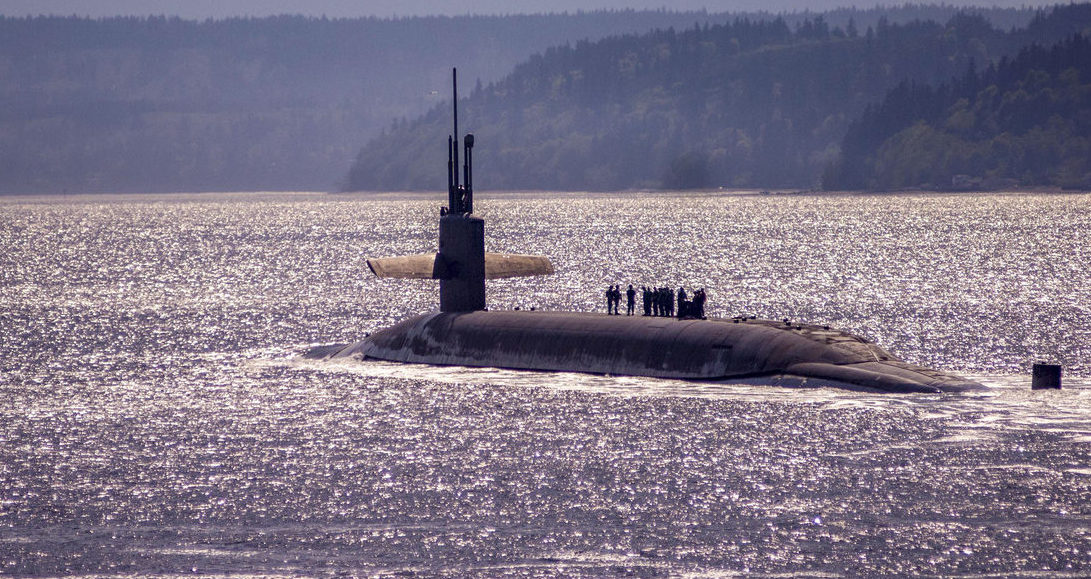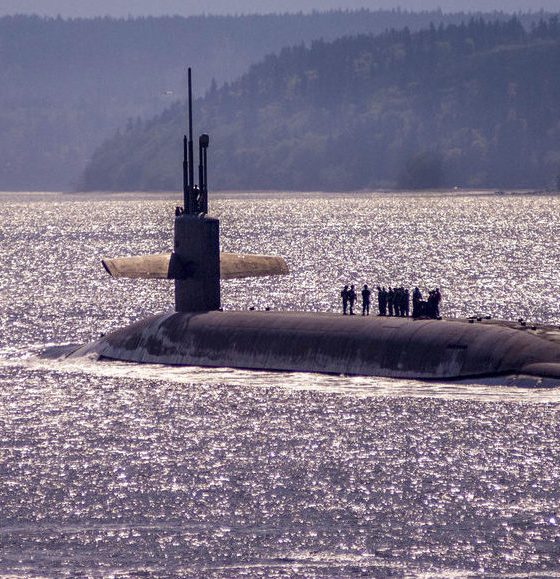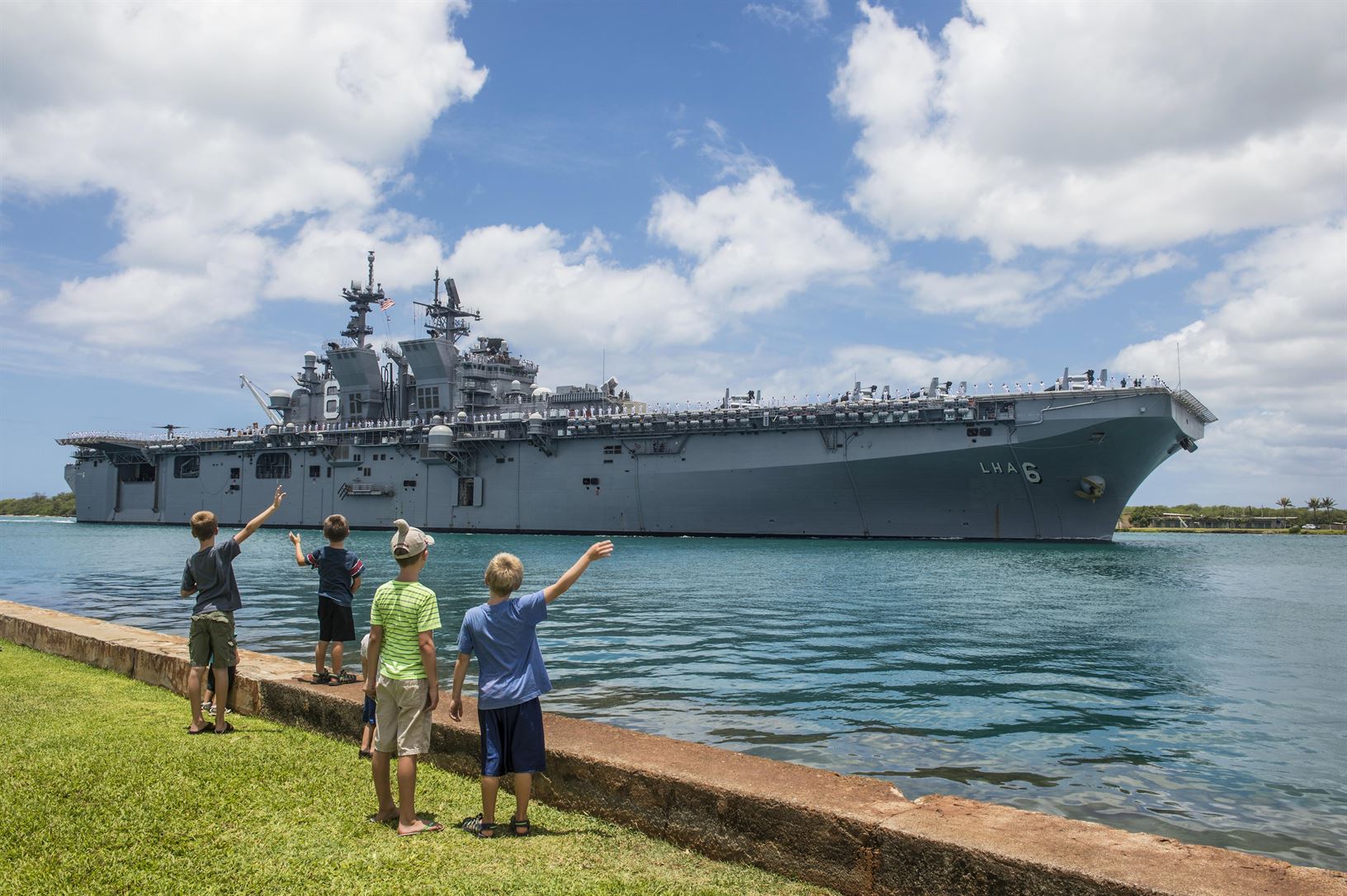

News
US military uses genetic engineering to develop “living tripwires” for submarines
The US Department of Defense (DoD) is investing $45 million dollars in a tri-service effort that focuses on synthetic biology (SynBio) for use in military technologies. This interdisciplinary scientific field primarily involves altering the genetic makeup of organisms to achieve specific behavior, and the military wants in on its potential applications. By uniting SynBio experts within the US Air Force, Army, and Navy, DoD officials hope to develop serious capabilities for use throughout the military’s branches.
The long form name of this project is the Applied Research for the Advancement of Science and Technology Priorities Program on Synthetic Biology for Military Environments, and the mission is obvious from its title alone. While still in the early research stages, engineering organisms could provide numerous tools with direct defense applications.
For example, organisms engineered to change their colors based on their environment could be used as living camouflage, and medications infused with protective microbes could help service member survival in tough conditions. However, it’s perhaps the US Naval Research Laboratory (NRL) in Washington DC that may hold the relevant interest in developing SynBio capabilities due to the marine environment potentials it holds.

Above the water, engineered self-repairing organisms could spell out self-healing paint for ships and aircraft carriers, cutting billions from the US Navy’s fleet maintenance costs. Even more important for defense needs, though, are the modified organisms that could help the branch’s deep water operations, i.e., submarines. By modifying the environmental response of naturally present organisms, naval defense could have a new type of radar at their disposal.
An abundant seawater-native bacteria with “clinging” properties called Marinobacter is a prime candidate for the DoD’s purposes. Specifically, the organism could be genetically engineered to react to certain types of molecules that aren’t naturally occurring in the ocean, such as diesel fuel or human DNA, and then spread into targeted environments for monitoring. This reaction could perhaps be the release of an electron, thus creating an electrical signal which nearby drones could pick up and transmit where necessary. The ability to detect non-friendly submarines is the key capability the researchers are aiming to achieve, the bacteria acting as “living tripwires.”
The field of synthetic biology is not new in the civilian world. In fact, consumer products currently exist based on it, such as bio fuels, soaps, cleaners, food additives, and a variety of industrial and manufacturing products. One of the challenges of bringing this type of technology to the field for military use is making the modified organisms tough enough to endure the environments needed.
“If you want to move a biological bio-based sensor to the field you try to ruggedize those organisms. You try to protect them…[and]…increase their longevity in these harsh environments,” explained Dimitra Stratis-Cullum, the lead of U.S. Army Research Laboratory biomaterials team, in a recent forum hosted by the Johns Hopkins University Applied Physics Laboratory.
The current genetic research being conducted in SynBio has demonstrated that the genes of E. coli bacteria can be manipulated to express properties relevant to the larger goal of underwater sensing. However, the significant differences between the E. Coli and the types of organisms natural to deep water environments, such as Marinobacter, can be compared to the differences between mice and humans.
The initial point really is to either prove that the desired outcome is possible or collect data to assist in that effort. In other words, there’s still a lot of work to be done, but making the effort a priority, such as what the Navy’s done with its “Task Force Ocean” mission aimed at strengthening partnerships within academia and the private sector regarding Navy-relevant ocean science, is a focused step in the right direction for the military to achieve its goals in SynBio.

Elon Musk
Elon Musk’s X will start using a Tesla-like software update strategy
The initiative seems designed to accelerate updates to the social media platform, while maintaining maximum transparency.

Elon Musk’s social media platform X will adopt a Tesla-esque approach to software updates for its algorithm.
The initiative seems designed to accelerate updates to the social media platform, while maintaining maximum transparency.
X’s updates to its updates
As per Musk in a post on X, the social media company will be making a new algorithm to determine what organic and advertising posts are recommended to users. These updates would then be repeated every four weeks.
“We will make the new 𝕏 algorithm, including all code used to determine what organic and advertising posts are recommended to users, open source in 7 days. This will be repeated every 4 weeks, with comprehensive developer notes, to help you understand what changed,” Musk wrote in his post.
The initiative somewhat mirrors Tesla’s over-the-air update model, where vehicle software is regularly refined and pushed to users with detailed release notes. This should allow users to better understand the details of X’s every update and foster a healthy feedback loop for the social media platform.
xAI and X
X, formerly Twitter, has been acquired by Elon Musk’s artificial intelligence startup, xAI last year. Since then, xAI has seen a rapid rise in valuation. Following the company’s the company’s upsized $20 billion Series E funding round, estimates now suggest that xAI is worth tens about $230 to $235 billion. That’s several times larger than Tesla when Elon Musk received his controversial 2018 CEO Performance Award.
As per xAI, the Series E funding round attracted a diverse group of investors, including Valor Equity Partners, Stepstone Group, Fidelity Management & Research Company, Qatar Investment Authority, MGX, and Baron Capital Group, among others. Strategic partners NVIDIA and Cisco Investments also continued support for building the world’s largest GPU clusters.
News
Tesla FSD Supervised wins MotorTrend’s Best Driver Assistance Award
The decision marks a notable reversal for the publication from prior years, with judges citing major real-world improvements that pushed Tesla’s latest FSD software ahead of every competing ADAS system.

Tesla’s Full Self-Driving (Supervised) system has been named the best driver-assistance technology on the market, earning top honors at the 2026 MotorTrend Best Tech Awards.
The decision marks a notable reversal for the publication from prior years, with judges citing major real-world improvements that pushed Tesla’s latest FSD software ahead of every competing ADAS system. And it wasn’t even close.
MotorTrend reverses course
MotorTrend awarded Tesla FSD (Supervised) its 2026 Best Tech Driver Assistance title after extensive testing of the latest v14 software. The publication acknowledged that it had previously criticized earlier versions of FSD for erratic behavior and near-miss incidents, ultimately favoring rivals such as GM’s Super Cruise in earlier evaluations.
According to MotorTrend, the newest iteration of FSD resolved many of those shortcomings. Testers said v14 showed far smoother behavior in complex urban scenarios, including unprotected left turns, traffic circles, emergency vehicles, and dense city streets. While the system still requires constant driver supervision, judges concluded that no other advanced driver-assistance system currently matches its breadth of capability.
Unlike rival systems that rely on combinations of cameras, radar, lidar, and mapped highways, Tesla’s FSD operates using a camera-only approach and is capable of driving on city streets, rural roads, and freeways. MotorTrend stated that pure utility, the ability to handle nearly all road types, ultimately separated FSD from competitors like Ford BlueCruise, GM Super Cruise, and BMW’s Highway Assistant.
High cost and high capability
MotorTrend also addressed FSD’s pricing, which remains significantly higher than rival systems. Tesla currently charges $8,000 for a one-time purchase or $99 per month for a subscription, compared with far lower upfront and subscription costs from other automakers. The publication noted that the premium is justified given FSD’s unmatched scope and continuous software evolution.
Safety remained a central focus of the evaluation. While testers reported collision-free operation over thousands of miles, they noted ongoing concerns around FSD’s configurable driving modes, including options that allow aggressive driving and speeds beyond posted limits. MotorTrend emphasized that, like all Level 2 systems, FSD still depends on a fully attentive human driver at all times.
Despite those caveats, the publication concluded that Tesla’s rapid software progress fundamentally reshaped the competitive landscape. For drivers seeking the most capable hands-on driver-assistance system available today, MotorTrend concluded Tesla FSD (Supervised) now stands alone at the top.
News
Elon Musk’s Grokipedia surges to 5.6M articles, almost 79% of English Wikipedia
The explosive growth marks a major milestone for the AI-powered online encyclopedia, which was launched by Elon Musk’s xAI just months ago.

Elon Musk’s Grokipedia has grown to an impressive 5,615,201 articles as of today, closing in on 79% of the English Wikipedia’s current total of 7,119,376 articles.
The explosive growth marks a major milestone for the AI-powered online encyclopedia, which was launched by Elon Musk’s xAI just months ago. Needless to say, it would only be a matter of time before Grokipedia exceeds English Wikipedia in sheer volume.
Grokipedia’s rapid growth
xAI’s vision for Grokipedia emphasizes neutrality, while Grok’s reasoning capabilities allow for fast drafting and fact-checking. When Elon Musk announced the initiative in late September 2025, he noted that Grokipedia would be an improvement to Wikipedia because it would be designed to avoid bias.
At the time, Musk noted that Grokipedia “is a necessary step towards the xAI goal of understanding the Universe.”
Grokipedia was launched in late October, and while xAI was careful to list it only as Version 0.1 at the time, the online encyclopedia immediately earned praise. Wikipedia co-founder Larry Sanger highlighted the project’s innovative approach, noting how it leverages AI to fill knowledge gaps and enable rapid updates. Netizens also observed how Grokipedia tends to present articles in a more objective manner compared to Wikipedia, which is edited by humans.
Elon Musk’s ambitious plans
With 5,615,201 total articles, Grokipedia has now grown to almost 79% of English Wikipedia’s article base. This is incredibly quick, though Grokipedia remains text-only for now. xAI, for its part, has now updated the online encyclopedia’s iteration to v0.2.
Elon Musk has shared bold ideas for Grokipedia, including sending a record of the entire knowledge base to space as part of xAI’s mission to preserve and expand human understanding. At some point, Musk stated that Grokipedia will be renamed to Encyclopedia Galactica, and it will be sent to the cosmos.
“When Grokipedia is good enough (long way to go), we will change the name to Encyclopedia Galactica. It will be an open source distillation of all knowledge, including audio, images and video. Join xAI to help build the sci-fi version of the Library of Alexandria!” Musk wrote, adding in a later post that “Copies will be etched in stone and sent to the Moon, Mars and beyond. This time, it will not be lost.”








